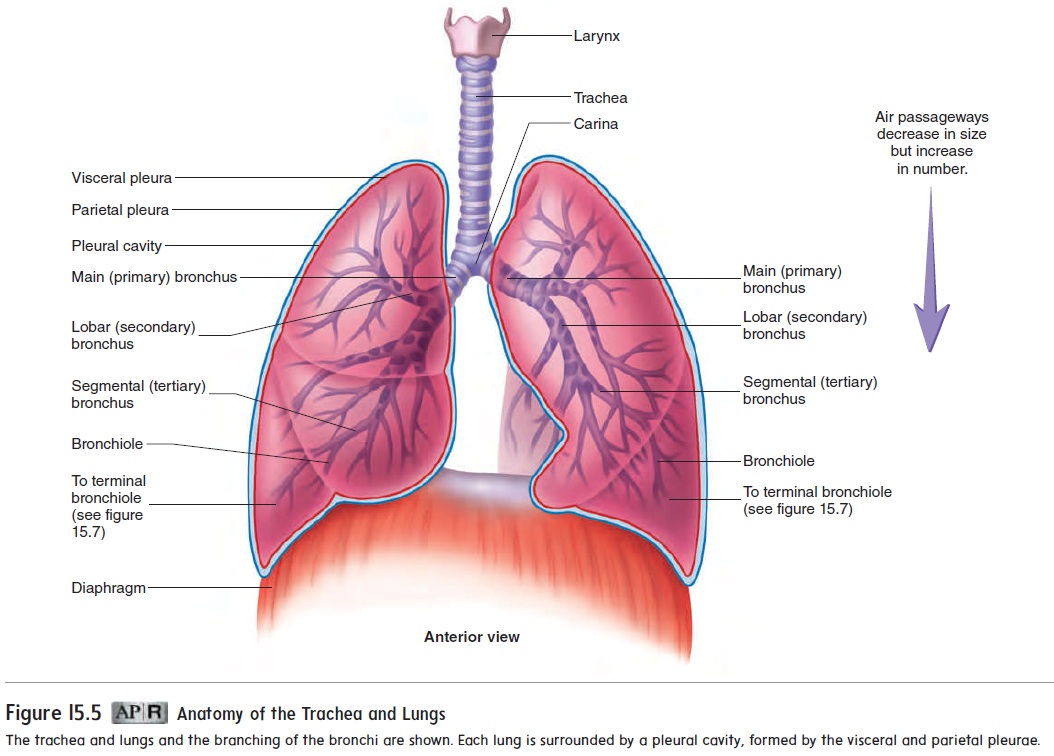Chapter: Essentials of Anatomy and Physiology: Respiratory System
Trachea - Anatomy of the Respiratory System

Trachea
The trachea (tr̄a ′ k̄e -̆a ), or windpipe, is a membranous tube attached to the larynx. It consists of connective tissue and smooth muscle, reinforced with 16–20 C-shaped pieces of hyaline cartilage (see figure 15.3). The adult trachea is about 1.4–1.6 centimeters (cm) in diameter and about 10–11 cm long. It begins immediately infe-rior to the cricoid cartilage, which is the most inferior cartilage of the larynx. The trachea projects through the mediastinum and divides into the right and left primary bronchi at the level of the fifth thoracic vertebra (figure 15.5). The esophagus lies immedi-ately posterior to the trachea (see figure 15.2a).

C-shaped cartilages form the anterior and lateral sides of the trachea. The cartilages protect the trachea and maintain an open passageway for air. The posterior wall of the trachea has no carti-lage and consists of a ligamentous membrane and smooth muscle (see figure 15.3b). The smooth muscle can alter the diameter of

This occurs, for example, when the cough reflex dislodges foreign substances from the trachea. Sensory receptors detect the foreign substance, and action potentials travel along the vagus nerves to the medulla oblongata, where the cough reflex is triggered. During coughing, the smooth muscle of the trachea contracts, decreasing the trachea’s diameter. As a result, air moves rapidly through the trachea, which helps expel mucus and foreign substances. Also, the uvula and soft palate are elevated, so that air passes primarily through the oral cavity.

The trachea is lined with pseudostratified columnar epithelium, which contains numerous cilia and goblet cells. The cilia propel mucus produced by the goblet cells, as well as foreign particles embedded in the mucus, out of the trachea, through the larynx, and into the pharynx, from which they are swallowed.
Constant, long-term irritation of the trachea by cigarette smoke can cause the tracheal epithelium to change to stratified squamous epithelium. The stratified squamous epithelium has no cilia and therefore cannot clear the airway of mucus and debris. The accu-mulations of mucus provide a place for microorganisms to grow, resulting in respiratory infections. Constant irritation and inflamma-tion of the respiratory passages stimulate the cough reflex, resulting in “smoker’s cough.”

Related Topics